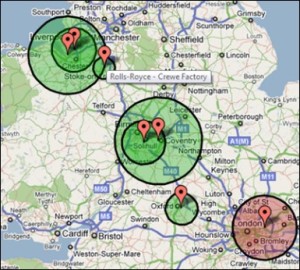This article covers Circle rate and Tax implications on Buyer and Seller if a property is bought/sold/registered below Circle rate value.
Circle Rate:
Circle rate refers to the minimum value at which the sale or transfer of a property (including plot, apartment & commercial property) has to be registered and stamp duty to be paid.
- Circle rates are usually defined by the local state government’s revenue departments or the local development authorities, in line with what they perceive the prices at which property sale or transfer should be undertaken.
- This rate differs within cities in the same state and also among various localities of a city.
- Since Circle rates impact review of local departments they are reviewed regularly to bring them in sync with market prices
Market Rate:
Market rate on the other hand is a function of demand and supply. It is the price agreed between the buyer and seller for a particular property. Market rates are generally much higher than Circle rates. In cities like Mumbai Market rate could be 90% higher than Circle rates.
At what rate should the property be registered?
- A property has to be registered either on the actual transaction value or the minimum Circle rate set by the government, whichever is higher.
- In rare cases, where the actual price paid by a buyer is less than the Circle rate, the property has to be registered on the Circle rate.
How does it impact a buyer?
In property sale or transfer transactions, stamp duties are paid by the buyer. An increase in Circle rate has a marginal impact on cost. However, the buyers own contribution towards the property increases in case stump duty and registration components are not funded by banks
This article focuses on tax treatment of a property transaction lower than Circle rate in hands of the seller and buyer.
Tax treatment in hands of seller (Section 50C)
Under section 50C if a property is sold at a value lesser than prevailing Circle rate of the location, for income tax purposes the property will be deemed to be sold at Circle rate and Capital gains tax (long term or short term depending on duration of ownership of the property) will be levied on the same.
For example: If the Circle rate computation works out to be 90 lacs and if the property is sold for 80 lacs. It will be assumed that property is sold for 90 lacs and accordingly Capital gains tax will be will be levied on the same.
Tax treatment in hands of the buyer (Section 56(2)(vii))
If a buyer purchases a property for a price lesser than the Circle rate and the difference in the purchase price and applicable Circle rate is more than Rs 50,000 ; the difference will be treated as income for the buyer and will be taxed under the head ”Income from other sources”
In the above example: Rs 10 lacs will be considered as income for the buyer and will be taxed under the head “Income from other sources”




